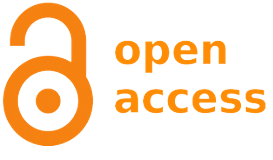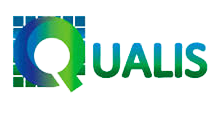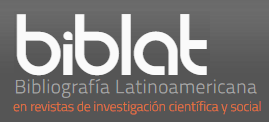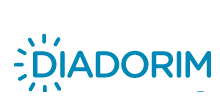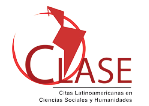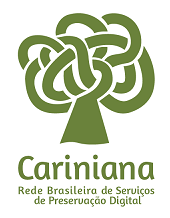The use of learning objects for teaching Spanish as a foreign language: analysis and didactic proposals
DOI:
https://doi.org/10.5433/1519-5392.2018v18n1Supl.p215Keywords:
Educational Objects. Use of technology, Teaching proposal, Teaching SpanishAbstract
Technological resources are more and more immersed in our daily lives. They are used in several ways and with varied purposes: communication, entertainment, organization/planning, among others. Given this context, its educational purpose also became a necessity and school institution and teachers have started to seek ways to include these tools in the classroom in order to follow and meet the demands of a technological society. Thus, this article aims to establish a brief historical overview of the use of technology in language teaching and to encourage its use in Spanish as a foreign language (ELE) classes for Brazilian learners. To do so, and more specifically, we aim to analyze two OA (audio and video) produced for the teachinglearning of ELE available in the International Bank of Educational Objects (BIOE) and propose activities from these two OA analyzed. We use as theoretical reference, authors that talk about terminologies related to technology (LÉVY, 1999; PAIVA, 2015; PRENSKY, 2001, 2010); technological resources and teaching (ARAÚJO, 2013; PRENSKY, 2001, 2010; SILVA, 2013; TALLEI e COELHO, 2012) and educational objects (ARAÚJO, 2013; WILEY, 2000).
Downloads
References
BRASIL. Ministério de Educação. Secretaria de Educação a distância. Banco Internacional de Objetos Educacionais. Disponível em: http://objetoseducacionais2.mec.gov.br/. Acesso em: 04 fev. 2017.
FERNÁNDEZ, Gretel Eres (Org.). Publicidade e Propaganda: o vídeo nas aulas de língua estrangeira. São Paulo: Companhia Editora Nacional, 2010.
LÉVY, Pierre. Cibercultura. Tradução de Carlos Irineu da Costa. São Paulo, SP: Editora, 34, 1999.
MORAN, José Manuel. O vídeo em sala de aula. In: Comunicação & Educação. São Paulo, ECA-Ed. Moderna, p. 27-35, jan./abr. de 1995. Disponível em: http://www.eca.usp.br/prof/moran/vidsal.htm. Acesso em: 24 abr. 2013.
PAIVA, Vera Lúcia Menezes de Oliveira e. O uso da tecnologia no ensino de línguas estrangeiras: breve retrospectiva histórica. In: JESUS, Dánie Marcelo de; MACIEL, Ruberval Franco (Orgs.). Olhares sobre tecnologias digitais: linguagens, ensino, formação e prática docente. Coleção: Novas Perspectivas em Linguística Aplicada. Campinas, SP: Pontes Editores, 2015, v. 44., p. 21-34. Disponível em: http://www.veramenezes.com/techist.pdf. Acesso em: 24 jan.2017.
PRENSKY, Marc. Nativos digitais, imigrantes digitais. Tradução de Roberta de Moraes Jesus de Souza. Versão original: Digital Natives Digital Immigrants. On the Horizon, NCB University Press, v. 9, n. 5, 2001, p. 1-6.Disponível em: https://docs.google.com/document/d/1XXFbstvPZIT6Bibw03JSsMmdDknw. Acesso em: 23 jan. 2017.
TALLEI, Jorgelina. Dime qué material usas y te diré qué profesor eres. In: BARROS, Cristiano Silva de; COSTA, Elzimar Goettenauer de Marins (Org.). Se hace camino al andar: reflexões em torno do ensino de espanhol na escola. Belo Horizonte: Faculdade de Letras da UFMG, 2012. p. 163-173.
TALLEI, Jorgelina; COELHO, Iandra María Weirich Silva. Formación docente y la aplicación de nuevas tecnologías en la enseñanza de E/LE en las escuelas técnicas. In: Texto libre: linguagem e tecnologia, v. 5, n. 2, p. 1-11, 2012. Disponível em: http://periodicos.letras.ufmg.br/index.php/textolivre. Acesso em: 26 jan. 2017.
Downloads
Published
How to Cite
Issue
Section
License
Copyright (c) 2018 Entretextos

This work is licensed under a Creative Commons Attribution 4.0 International License.
Entretextos adota a Licença Creative Commons Attribution 4.0 International, portanto, os direitos autorais relativos aos artigos publicados são do/s autor/es.
Sob essa licença é possível: Compartilhar - copiar e redistribuir o material em qualquer suporte ou formato. Adaptar - remixar, transformar, e criar a partir do material, atribuindo o devido crédito e prover um link para a licença e indicar se mudanças foram feitas.






